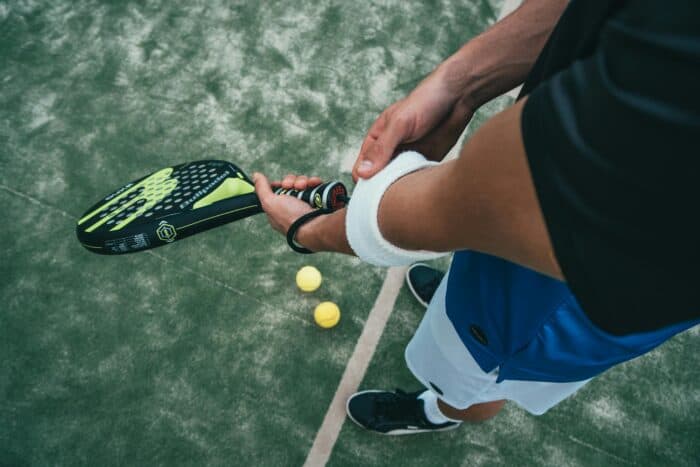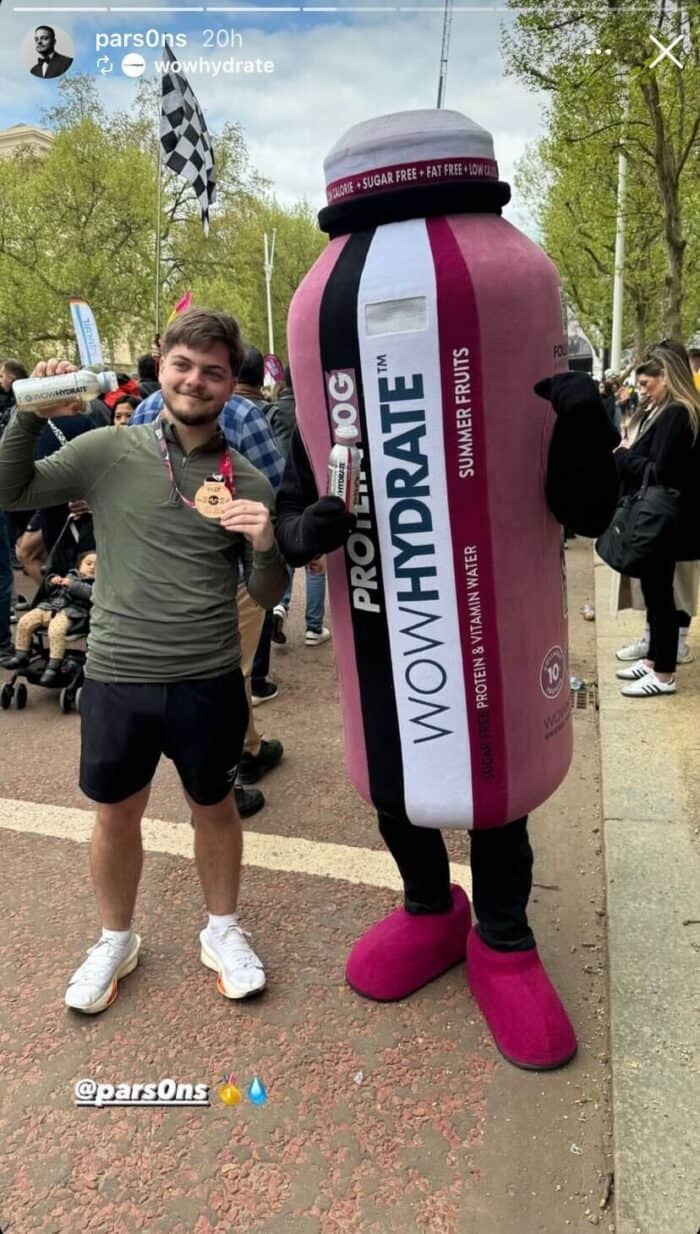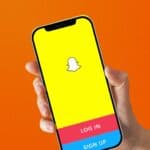The sporting world is gearing up for a summer of fierce competition, and social media, in alignment with influencer marketing, will emerge as trusted methods for brands to connect with sports savvy consumers.
The intersection of sport and social media presents new opportunities seeking to engage with fans. But first, we must understand the evolving role of social in sport. We’ll examine the impact of influencers, and how they’re becoming innovative marketing solutions for sports brands in the digital age.

Contents
The role of social media in sport
Where do influencers enter the ring?
How are sports brands working with influencers?
The Caitlin Clark effect: a symbiosis of social, influencer and sport
Concluding thoughts – the role of influencers in sport
The role of social media in sport
Social media has transformed the sports landscape, revolutionizing the way in which fans engage, athletes interact, and brands connect with audiences online.
Platforms like Instagram, Twitter, YouTube, and more recently, TikTok, have become hubs for fans to stay updated in real-time. Here, they can connect with the sports teams, leagues, and athletes they’re interested in. Social has democratized access to sports content, allowing anyone, from anywhere, to participate in the conversation regardless of geographical barriers.
Athletes have adopted social media to cultivate their personal brands, offering glimpses into their lives on and off the field, and even stepping into the shoes of creators by monetising their influence through brand partnerships.
Social platforms have emerged as powerful marketing tools for sports organizations and brands. Platforms like X, Instagram, YouTube, and TikTok are used to promote events, and amplify sponsorships. Here, social media campaigns are created to enhance brand visibility during major sporting events.
Where do influencers enter the ring?
Influencers and content creators are the bridge between athletes, teams, and fans. They offer a more personalized and relatable perspective on sports than those involved in them. By sharing their experiences, influencers are able to cultivate communities who actively engage with sports content.
It used to be that sports organizations and brands relied solely on the influence of athletes in sponsorship opportunities. While athletes are still effective in driving brand awareness and enhancing fan loyalty, influencers have started to become more widely used, and are equally, if not more, powerful at engaging audiences in the digital space.
Influencers provide brands with a means of reaching niche communities within the sports landscape. Whether focused on specific sports, fitness routines, or lifestyle aspects, influencers know how to cater to diverse interests, which enables brands to tap into these communities.
From shaping trends and driving brands onto the podium through viral moments, influencers have played an integral role in shaping sports content in the modern day.
Athletes versus influencers
In sports marketing, athletes are a tried and tested method for brands looking to connect with sports-savvy consumers, which still stands today. Just look at Nike, in the 80’s they teamed up with Michael Jordan to create the Air Jordan’s sneaker. In football, their partnerships have shifted throughout the decades, from collaborations with Brazilian superstars Ronaldo Nazario and Ronaldinho in the 2000s, to Cristiano Ronaldo and Neymar in the 2010s. At Adidas and New Balance it’s the same story as they look to stand with the next generation of talent, acquiring Jude Bellingham and 17-year-old wonderkid Endrick respectively.
Partnering with athletes works, and why wouldn’t it? They’re huge stars, with overwhelming influence over their respective fields. And yet, influencers continue to creep into the frame.
Influencers have become more widely adopted in sports marketing because they find success in areas where traditional athletes fall short.
“Athletes often have a strong online presence, but they don’t have a community in the way that influencers do. Influencers have had to build on social from scratch; they really know their audience and what they respond to, and they’ve built a much deeper parasocial relationship with them.”
Is how Jack Edwards, Account Director at The Goat Agency, puts it.
Where influencers often surpass athletes is their ability to communicate with an audience. After all, this is their bread and butter, while athletes are in the gym or on the training pitch, influencers are talking to the camera, engaging with their followers, and building their brands. Creators know the social space much better than any athlete ever could, simply because it’s their craft. That’s not to say that influencers should be used in silo , as there are many positives to working with athletes. For maximum effectiveness, brands should look to work with both, depending on the mission. Sports brands aren’t yet going to swap out elite athlete ambassadors in favor of creators, but if they’re looking to tap into niche communities within sports with a more personalized approach, influencers should be on the draft list.

How are sports brands working with influencers?
MLB
Major League Baseball is gaining momentum in the UK, so we decided to send influencers up to bat.
With seven influencers across fashion, music and food, as well as sport, we partnered with MLB and created an all-new creator class, ready for the brand’s summer series event in London.
The content included VIP fan events, hitting up the MLB’s own Home Run House entertainment and food venue. Game day itself provided real-time and aftermath review content, and sending influencers to Lids to customize their MLB merch and promote giveaways kept the irons hot and built hype for the 2024 event.
MLB has a less frequent run of events in the UK compared to its home nation, so it’s crucial to build and sustain hype throughout the year, bridging the gap between flagship events and building a loyal fanbase.
A key element of this was placing a focus on pre- and post-event activities and venues, such as Home Run House, and related shopping opportunities. Through this, audiences were incentivised not to just become a fan of baseball and consider hitting the 2024 London Series, but to head down to the batting cages, for some classic American food, or pick up an MLB baseball cap, contributing to the wider integration and growth of a UK baseball culture.
At the heart of it all, our influencers gave audiences an opportunity to immerse themselves in the London Series experience, following the likes of Craig Mitch, and Theo Ogden through the turnstiles and into the stands, with hot dogs getting thrown about as much as baseballs.
UFC
Ultimate Fighting Championship, is a premier mixed martial arts organization, known for its high-energy fights, diverse fighters, and global appeal. If you’ve ever tuned into one of these high octane events you’ll have seen star-studded attendances from well known celebrities, athletes, politicians, and influencers alike.
The UFC is no stranger to influencer marketing. In the past, they’ve collaborated with different celebrities and influencers to raise the interest of a particular event on social. But, within the past year the organization has developed a stronger relationship with influencer Nina Marie Daniele, a Playboy model turned YouTuber who is now the poster girl for the UFC across social media.
Daniele’s Instagram feed has become a hub for fighting fans, a place where they can tune into interviews with the fighters they follow in a more fun and engaging way than what is available via mainstream media. Instead of asking fighters how their training camps are going, Nina channels more comedic moments with questions like “What’s the hardest English word for you to pronounce?”. Fighters are often painted as hardened, war-ready characters, Reels like these allow fans to foster a deeper connection with the athletes they follow.
WOW Hydrate
Wow Hydrate is a revolutionary hydration product designed to replenish electrolytes, enhance performance, and provide sustainable energy with natural ingredients. The brand has made waves in the combat sports scene, and is not stranger to enlisting influencers to elevate their social campaigns.
3 years ago, the brand launched a YouTube series that brings influencers and athletes together to create engaging content. Wow Hydrate launched the series with Chunkz and Filly sitting down with Tyson Fury, asking the heavyweight boxer a bunch of questions before taking a punch to the midriff.
Recently Wow Hydrate rebranded its YouTube series; named The Stomping Ground, bringing in Charlie Parsons to revolutionize the brand’s YouTube channel. Starting out as a content creator for Boxing Social, Parsons has leveraged social media, and familiar faces within boxing to create viral moments and build his personal brand. From making fun of promoter Eddie Hearn’s fashion sense, being mentioned in The Sidemen podcast, to appearing ringside at some of boxing’s hottest tickets, Parsons has quickly emerged as one of boxing’s most exciting influencers, prompting Wow Hydrate to snap him up.
Parsons is on the frontline, packaging the latest in sports and delivering it with an almighty punch on the Wow Hydrate YouTube channel. From hilarious interviews with Eddie Hearn, sitting down with the ice-cold Artur Beterbiev, and greeting Russ Cook at the end of his mission across Africa, The Stomping Ground really is marching to the top of the sports podcast ladder.

The Caitlin Clark effect: a symbiosis of social, influencer and sport
Dubbed by mainstream media, The Caitlin Clark effect converges social media, influencer marketing, and sports. But what is it, and who is Caitlin Clark?
Basketball outfit, Indiana Fever’s latest draft pick Caitlin Clark has become a phenomenon. She is the all-time leading NCAA Division I-leading scorer and leading 3-point scorer, for both men’s and women’s basketball. A two-time national; player of the year, she’s the most prolific player to ever enter a professional draft.
At just 22-years-old, Clark is being thrown into comparisons with one of the most influential figures, not only in basketball, but in recent history, Michael Jordan. Prior to joining the pro leagues, Clark headlined an epic women’s college basketball game between the Iowa Hawkeyes and LSU Tigers. 12 million people, including Lebron James, and Travis Scott tuned in. It was one of the most-watched college basketball games ever, men’s or women’s. This marked a watershed moment for women’s basketball as the push for gender parity in sports reaches new heights.
She wins games, lots of them. Breaks records, lots of them as well. And stadiums fill out just to see her in action. Her star power reaches beyond the court, with over 2.1M Instagram followers who are being introduced to a new era of sporting excellence.
On the eve of her induction into professional basketball, Clark wore a full Prada outfit, accompanied by a beauty look including a just-launched product from Glossier. Fashion and beauty publications couldn’t resist getting in on the conversation as Clark styled out at the WNBA Draft.
Brands are snapping at her heels, vying for sponsorship and ambassadorship opportunities. US Supermarket chain Hy-Vee and Insurance firm State Farm have succeeded in doing so, collaborating with Clark in separate ventures, showcased on Instagram.
Clark is emerging as an icon, both on the court, and off it. Her influence is immeasurable, and the heights she could reach are off the scale. Here we have an athlete for the history books, who’s in tune with social media, and has already started to slam dunk brand deal after brand deal.
Concluding thoughts – the role of influencers in sport
The sports landscape is ever-evolving, with influencers, athletes, and brands continually reshaping the playing field. As we’ve seen, social media has not only democratized access to sports content but has also redefined how athletes connect with fans and brands engage with audiences.
The emergence of influencers alongside traditional athletes has added a new dimension to sports marketing, offering brands avenues to tap into niche communities and foster deeper connections with fans. While athletes remain powerhouses of influence, content creators bring a different skill set in communication and community-building, leveraging social platforms to engage audiences in ways that resonate deeply.
The Caitlin Clark effect underscores the transformative power of social media, where a blend of sporting excellence, social savviness, and brand collaborations transforms athletes into icons.
The nexus of sports and social media offers boundless opportunities for innovation and connection. As we look ahead, one thing is certain: the influence of social media on sport will only continue to grow, shape even further narratives, amplify voices, and inspire generations to come.
—
Ready to enter the ring of sports influencer marketing? Find out how we can help champion your sports sponsorships by getting in touch.





